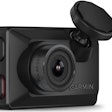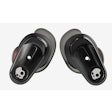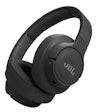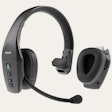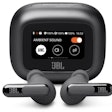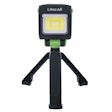You can learn a lot about truck drivers by watching their head and eye movements. Are they looking ahead but frequently scanning their mirrors and gauges? Or are they distracted and perhaps drifting off to sleep?
Telematics systems and video event recorders can already monitor the inputs from sensors and controls on the vehicle to detect risky driving behaviors. Now, a new set of technologies is able to directly monitor drivers themselves.
Maven Co-Pilot uses a hands-free wireless headset to detect head motion.PGT Trucking, an 1,100-truck carrier with flatbed operations based in Monaca, Pennsylvania, is currently testing such a technology from Maven Machines.
About 25 drivers at the company have volunteered to use a high quality Bluetooth headset as their hands-free communication device, paired with their smartphones. Drivers can make phone calls, listen to music or get voice commands from their navigation apps.
The safety benefit is not limited to hands-free connectivity. Inside the headset are sensors that detect subtle head movements as drivers look side to side at mirrors, down at gauges, or at objects inside and around their vehicles. The sensors and algorithms can also detect head bobs, or a lack of movement, as early signs of drowsiness or fatigue.
The headset communicates with an app called Maven Co-Pilot. The app gives drivers feedback on their safe driving with scores that indicate if they are checking their mirrors in a timely manner, following the speed limit, and more.
Soon, the product will have the option to actively warn drivers and fleets of fatigued or distracted driving. As an option, drivers can use their own voice recording as an alert.
Fleets use a web portal to assess driver risk and skill levels. To provide added context for the results, Maven Co-Pilot includes temperature, speed and location data in its reports and visual map displays. It can also bring hard braking and lateral acceleration (swerving) events using data captured by phones and third party telematics systems, he says.
Fleet managers can use the web portal to see if drivers are properly checking their mirrors in traffic or while going through an intersection, among many possibilities.
Gregg Troian, president of PGT Trucking, says the fleet is in the process of evaluating how to use the information “to tell if drivers are developing the kind of habits they need to drive effectively and without accidents.” Drivers currently use the technology on a voluntary basis, but Troian says it may become mandatory for those with a higher risk profile or for retraining purposes.

